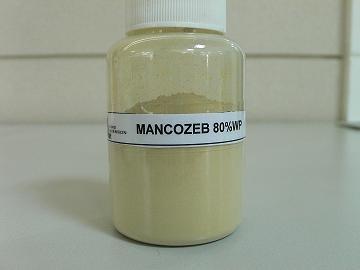At present, rice is being transplanted one after another. After rice is transplanted, it is necessary to promptly strengthen the management of Daejeon in order to promote the early occurrence of rice. The following technical measures are mainly implemented:
1. Strengthen water slurry management. After transplanting rice seedlings, it is better to use deep-water, shallow-water irrigated irrigation methods to ensure early planting of seedlings and early-onset tillering. Direct seeding field should be planted once after sowing to ensure early emergence of seedlings and early seedlings. All seedlings must be sown at the same time. They must be cleaned up and matched with the furrows in the fields so that they can be filled with water and energy, and a shallow water layer can be established at the time of the two leaves to promote early birth.
2, early application sub-fertilizer. After the rice returns to green, it is necessary to chase after applying fertilizer in a timely manner, generally 5 to 7.5 kilograms of topdressing urea; after 7-10 days of top dressing, the amount of childbirth that can be seen in Daejeon and the change in leaf color of seedlings , Appropriate amount of balance fertilizer or strong fertilizer, mu urea 3 ~ 4 kg / acre. For the lack of basic stem and seedlings, machine-inserted and live-broadcasting plots, it is necessary to increase the number of tiller fertilizers appropriately.
3, timely control of weeds. 5-7 days after transplanting, D. benzyl compound and other herbicides are used to control weeds in the field, and the shallow water layer should be kept for 5-7 days after application. The live grass field has a large amount of weeds due to the complexity of grassy phases. Two times of control, the first time after planting seedlings, the use of herbicides such as Beaufort and butachlor to seal the paddies, kill sedges, grasses and other broad-leaved weeds; the second time in the seedlings 2 At the 3rd leaf stage, fast killing crickets, benzyl yellow crops and other agents were selected for control.
4, to strengthen the prevention and control of pests and diseases. This year, the occurrence of SBPH is high, the rate of poisoning is high, and stripe blight has a tendency of pandemic, and some susceptible varieties such as Wuyujing No. 3 and Wuyunjing No. 8 have increased, so With the drug transplanted, the first drug was administered immediately after 3-5 days of rice planting, and the drug was re-administered every 4-7 days. Indica rice was used for 3-4 times, and hybrid rice was used twice.
5, the improper management of fertilizer or abnormal weather and other unfavorable factors caused by the emergence of sterile seedlings, and timely spraying appropriate growth regulators to promote seedling transformation.
1. Strengthen water slurry management. After transplanting rice seedlings, it is better to use deep-water, shallow-water irrigated irrigation methods to ensure early planting of seedlings and early-onset tillering. Direct seeding field should be planted once after sowing to ensure early emergence of seedlings and early seedlings. All seedlings must be sown at the same time. They must be cleaned up and matched with the furrows in the fields so that they can be filled with water and energy, and a shallow water layer can be established at the time of the two leaves to promote early birth.
2, early application sub-fertilizer. After the rice returns to green, it is necessary to chase after applying fertilizer in a timely manner, generally 5 to 7.5 kilograms of topdressing urea; after 7-10 days of top dressing, the amount of childbirth that can be seen in Daejeon and the change in leaf color of seedlings , Appropriate amount of balance fertilizer or strong fertilizer, mu urea 3 ~ 4 kg / acre. For the lack of basic stem and seedlings, machine-inserted and live-broadcasting plots, it is necessary to increase the number of tiller fertilizers appropriately.
3, timely control of weeds. 5-7 days after transplanting, D. benzyl compound and other herbicides are used to control weeds in the field, and the shallow water layer should be kept for 5-7 days after application. The live grass field has a large amount of weeds due to the complexity of grassy phases. Two times of control, the first time after planting seedlings, the use of herbicides such as Beaufort and butachlor to seal the paddies, kill sedges, grasses and other broad-leaved weeds; the second time in the seedlings 2 At the 3rd leaf stage, fast killing crickets, benzyl yellow crops and other agents were selected for control.
4, to strengthen the prevention and control of pests and diseases. This year, the occurrence of SBPH is high, the rate of poisoning is high, and stripe blight has a tendency of pandemic, and some susceptible varieties such as Wuyujing No. 3 and Wuyunjing No. 8 have increased, so With the drug transplanted, the first drug was administered immediately after 3-5 days of rice planting, and the drug was re-administered every 4-7 days. Indica rice was used for 3-4 times, and hybrid rice was used twice.
5, the improper management of fertilizer or abnormal weather and other unfavorable factors caused by the emergence of sterile seedlings, and timely spraying appropriate growth regulators to promote seedling transformation.
Mancozeb
It is a dithiocarbamate non-systemic agricultural fungicide with multi-site, protective action on contact. It is a combination of two other dithiocarbamates: maneb and zineb. The mixture controls many fungal diseases in a wide range of field crops, fruits, nuts, vegetables, and ornamentals. It is marketed as Penncozeb, Trimanoc, Vondozeb, Dithane, Manzeb, Nemispot, and Manzane.

Agricultural Mancozeb,Rice Sheath Blight Mancozeb,Pesticides Agricultural Mancozeb,Fungicides Mancozeb
Ningxia Bornstein Import & Export Co., Ltd , http://www.bornstein-agriculture.com